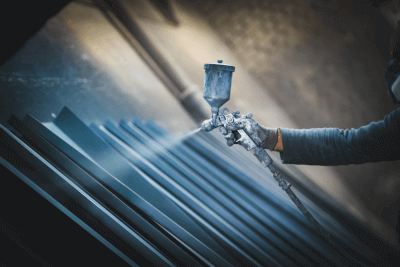What Is Metal Coating?
 Metal coating is a process where paint is applied to a metal surface. This process typically involves four stages: pretreatment, formulation, application, and drying. Pretreatment cleans the metal surface to enhance paint adhesion. During formulation, paints and thinners are mixed to achieve desired functions and colors. The application stage involves painting the metal surface either by brushing or spraying. Finally, the coating is dried at room temperature or using heat.
Metal coating is a process where paint is applied to a metal surface. This process typically involves four stages: pretreatment, formulation, application, and drying. Pretreatment cleans the metal surface to enhance paint adhesion. During formulation, paints and thinners are mixed to achieve desired functions and colors. The application stage involves painting the metal surface either by brushing or spraying. Finally, the coating is dried at room temperature or using heat.
Uses of Metal Coatings
Metal coatings serve decorative purposes, protect materials, and add functionality. They can impart color, pattern, and luster to products like cars, allowing for various colors within the same vehicle model. Additionally, applying a coating film protects metal surfaces from elements such as rust, thereby enhancing durability.
Types of Metal Coatings
Various types of metal coatings exist beyond traditional brush applications, including:
- Solvent Coating: This method involves dissolving paint in a solvent like thinner and applying it using a sprayer or roller.
- Baking Coating: In baking coating, paint is sprayed onto the surface and then heated to harden. This enhances the adhesion and weather resistance of the paint film.
- Powder Coating: Powder coating involves attaching powdered paint to the object using static electricity, followed by heating to melt and form a coating film. It allows for a thicker coating in a single application compared to liquid paint.
- Electrostatic Coating: Electrostatic coating uses electrically charged paint, which adheres to the surface through static electricity, reducing waste and achieving a more uniform finish. However, high voltage usage requires precautions against electric shock and fire.
- Electrodeposition Coating: Electrodeposition coating forms a film by immersing the object in a paint container and passing electricity through it.